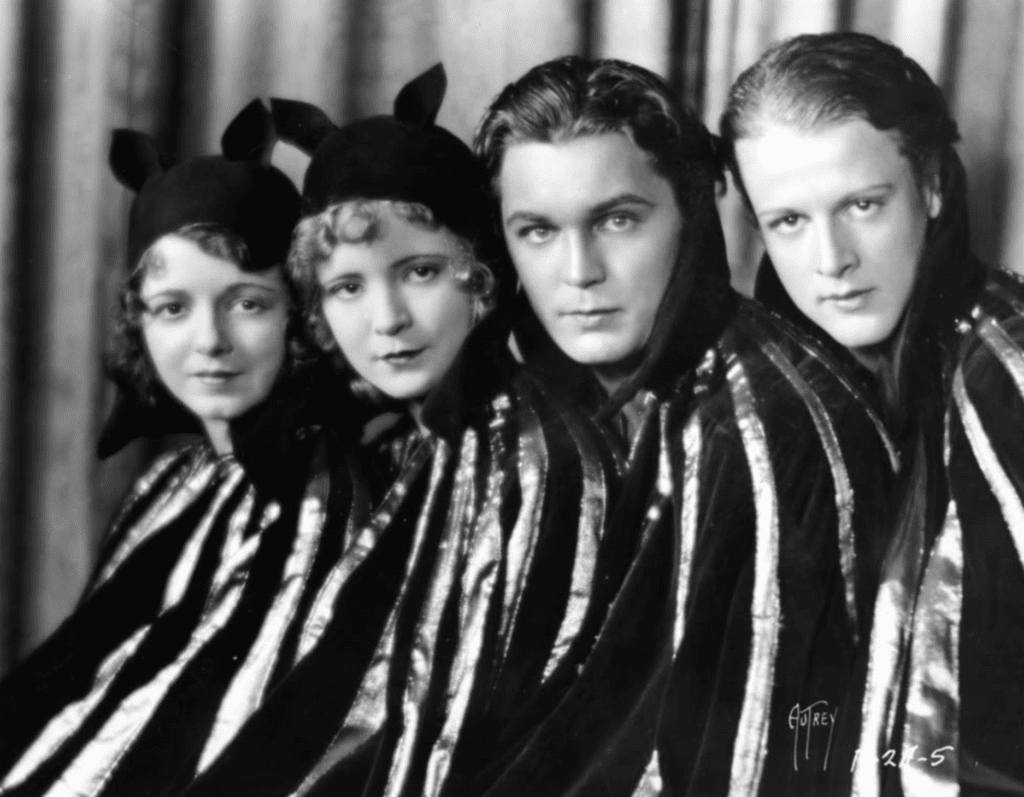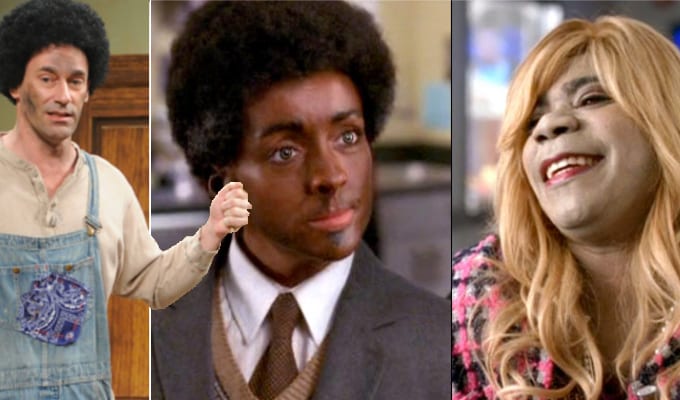 Technology
Technology  Technology
Technology  Humans
Humans 10 Everyday Human Behaviors That Are Actually Survival Instincts
 Animals
Animals 10 Animals That Humiliated and Harmed Historical Leaders
 History
History 10 Most Influential Protests in Modern History
 Creepy
Creepy 10 More Representations of Death from Myth, Legend, and Folktale
 Technology
Technology 10 Scientific Breakthroughs of 2025 That’ll Change Everything
 Our World
Our World 10 Ways Icelandic Culture Makes Other Countries Look Boring
 Misconceptions
Misconceptions 10 Common Misconceptions About the Victorian Era
 Mysteries
Mysteries 10 Strange Unexplained Mysteries of 2025
 Miscellaneous
Miscellaneous 10 of History’s Most Bell-Ringing Finishing Moves
 Technology
Technology Top 10 Everyday Tech Buzzwords That Hide a Darker Past
 Humans
Humans 10 Everyday Human Behaviors That Are Actually Survival Instincts
 Animals
Animals 10 Animals That Humiliated and Harmed Historical Leaders
Who's Behind Listverse?

Jamie Frater
Head Editor
Jamie founded Listverse due to an insatiable desire to share fascinating, obscure, and bizarre facts. He has been a guest speaker on numerous national radio and television stations and is a five time published author.
More About Us History
History 10 Most Influential Protests in Modern History
 Creepy
Creepy 10 More Representations of Death from Myth, Legend, and Folktale
 Technology
Technology 10 Scientific Breakthroughs of 2025 That’ll Change Everything
 Our World
Our World 10 Ways Icelandic Culture Makes Other Countries Look Boring
 Misconceptions
Misconceptions 10 Common Misconceptions About the Victorian Era
 Mysteries
Mysteries 10 Strange Unexplained Mysteries of 2025
 Miscellaneous
Miscellaneous 10 of History’s Most Bell-Ringing Finishing Moves
10 Movies And TV Shows Lost From Public View
A lot of work goes into the creation of a movie or television program such as writing the screen- or teleplay, pitching the idea to a production company, casting, and all the technical tasks which include cinematography, lighting and film editing—all coming together harmoniously to produce a masterpiece which will hopefully be appreciated for generations. And often such presentations do leave a long-lasting legacy, with movies such as The Wizard of Oz and It’s a Wonderful Life entertaining people for decades and decades. But sometimes movies simply disappear forever, falling from public view and memory due to age, mishap or scandal. Television programs often follow suit in entirety or by individual episode. There have also been actors whose entire careers have disappeared due to the ravages of time or political correctness. Here are a few examples of productions that have fallen into oblivion, and a couple that have miraculously made it back!
10 Books That Have Been Lost To History
10 Remembering Valeska Suratt

One shining example of an entire career gone missing is the story of Valeska Suratt (1882-1962), an early twentieth-century actress who rose from a risque career in vaudeville to embrace a successful career on Broadway. She was known for her glamour and style, and she went on to star in eleven silent flicks by Fox studios from 1915 through 1917, recreating herself in vampish roles along the lines of the great Theda Bara.
Suratt was truly an actress that should be held in high esteem but most people these days, with the exception of film historians, do not remember her due to two significant events. First, in 1928 she sued Cecil B. Demille, claiming he stole the scenario for a movie from her, and she was unofficially blacklisted in Hollywood where she never worked again. Then, years later in 1937, all eleven of her movies were destroyed in a fire at the building where they’d been stored in Little Ferry, New Jersey, wiping out all cinematic footage of her lively and highly-fashionable career. She was soon forgotten by the general public.
In 1962 Valeska Suratt died at 80 in a nursing home, having for the most part vanished from public visibility, though in those bygone, post-WWI days of yore all eyes were upon her…
9 Forgetting Charlie Chan
The aforementioned fire in 1937 at that New Jersey storage facility also took a bite out of the extensive Charlie Chan legacy, an empire that started in 1925 with the novel The House without a Key by Earl Derr Biggers, and would go on to include five more books, a comic strip, a 50’s tv show and a 70’s cartoon series. Four early movies from Fox studios were lost forever in that fire: Charlie Chan Carries On (1931), Charlie Chan’s Chance (1932), Charlie Chan’s Greatest Case (1933) and Charlie Chan’s Courage (1934). Each of these movies starred Warner Oland as Chan, and their absence is an unfortunate gap in the series of forty-four films featuring the wise and honorable detective.
But Charlie Chan is not held as favorably in American society as he once was, at least amongst the populace who can still remember who he was. There has not been a theatrical release with Chan since 1981 (Charlie Chan and the Curse of the Dragon Queen), which prompted demonstrations from Chinese-American activists at filming locations and theaters due to his acquired ‘Uncle Tom’ status. The character of Chan has been notoriously played on the big screen by white actors in yellowface with their eyes taped to look Asian, and the chop suey accent combined with his wizened aphorisms are just a bit too un-PC for the public these days. This sentiment may actually be the bigger catalyst deciding the cultural perseverance of Charlie Chan than an old fire at a Fox storage facility.
As the sleuth himself once said: All forgotten, like last year’s bird’s nest…
8 4 Devils Lost At Sea

Another golden oldie lost forever is the film 4 Devils (1928), a melodramatic circus movie directed by the iconic F. W. Murnau for Fox Studios. It was originally released as a silent movie, then re-released with a partial soundtrack, which gave the film a certain progressive distinction up until one of the actresses, a beautiful, Broadway crossover named Mary Duncan, borrowed it for a party in Florida with her friends where she threw it into the ocean. But why in blazes would she do such a thing?
Mary Duncan led a long and elegant life before passing in 1993 at the age of 98. Her escapades included a successful streak on Broadway, a short-lived but sexy career in Hollywood, and a marriage in 1933 to international polo star and businessman, Stephen Sanford. After marrying she retired from acting and became a seasoned philanthropist, ruling as the queen of Palm Beach society and walking amongst the ranks of Rose Kennedy and the Duke and Duchess of Windsor, so we can only speculate who her friends might have been at that party in Florida where she lost the film. Actually most of the story is hearsay possibly based on solid fact but retold so many times it has different versions. Duncan probably borrowed the film in the ’40’s sometime after WWII, which means it survived the Fox storage facility fire in 1937 only to sleep with the fishes a decade later. And all of the many accounts of this story are by word of mouth with conflicting details, some having her casting the film into the Pacific, some into the Atlantic, some into a swimming pool, and some have her destroying the film by fire. According to her own attestation she became concerned with the combustible nitrate in the film, and fearing it might explode she threw it into the ocean, unaware she’d been holding the only copy. But that itself adds to the mystery because 4 Devils was released twice, as a silent flick and then a talkie, and since it’s assumed Duncan only borrowed one version of the film historians are still hopeful that the other might turn up somewhere.
Until that happens, perhaps another detail worth speculating upon is what they were drinking at that party, and how much.
7 Disney Ditches A Dark Legacy
Most people consider Disney movies to be wholesome and entertaining, but The Walt Disney Company has a long history of including negative racial cliches in their features that many people have come to find objectionable. Probably number one on that list would be Song of the South (1946), which portrays blacks as being indifferent to the unequal society in which they live, and depicts racial stereotypes with such insensitivity that the term ‘tar baby’ is used in one of the animated scenes. By a modern-day perspective the characters’ cheerful acceptance of the social structuring of the Old South is disturbing, and many find it unsettling to watch a smiling, elderly Uncle Remus take a pleasantly-psychedelic stroll while singing Zip-a-Dee-Doo-Dah! This movie has not shown in theaters since 1986 and is not included in the Disney Plus streaming membership.
Another major embarrassment for Disney was an explicitly racist scene from Fantasia (1940) in which black centaurettes with donkey legs are subservient to lighter-skinned centaurettes with horse legs, right down to shining their hooves. The scene was cut when the movie was released again in 1969. And the movie Dumbo (1941) certainly carries controversy when the young elephant meets a group of mocking black crows acting out in stereotypical Negro behavior, one of whom is actually called Jim Crow, named after a system of Southern laws which mandated racial segregation! Perhaps the worst example of racism in the film is the “Song of the Roustabouts”, which features faceless, black circus laborers in a very demeaning manner, even using the lyrics, “Grab that rope, you hairy ape.” Consequently, Disney Plus has removed this movie from subscribers whose profiles are under age 7.
Other movies unavailable to young children on Disney Plus are Peter Pan (1953) for derogatory portrayal of ‘redskins’, and The Aristocats (1970) for a negative depiction of Asians through a singing Siamese cat with buck teeth and a cliched accent.
6 Jack Paar Twice Removed

It’s not just movies that are often forever lost; the small screen has it’s share of casualties also…
Jack Paar took over the reins of The Tonight Show in July of 1957 as permanent host up until 1962, by which time, due to his popularity, the show had been officially renamed The Jack Parr Show. Paar had a unique approach with guests that was often very emotional, even to the point of weeping, and he helped make household names of Zsa Zsa Gabor, Liza Minnelli and Carol Burnett.
But the episode which best displayed Paar’s emotionalism probably would be the one that aired on February 11, 1960. Very early into the show Paar learned that a joke he had made the previous evening had been censored by the network for using the abbreviation ‘W.C.’, short for water closet, which by the standards of the day was considered to be, literally, bathroom humor. Before walking off the show he told the audience, “I am leaving The Tonight Show. There must be a better way of making a living than this.” Hugh Downs filled in for him, but on March 7 of the same year Paar walked back on stage and told everyone, “As I was saying before I was interrupted…” After the audience’s laughter died down he went on, “I believe my last words were that there must be a better way of making a living than this. Well, I’ve looked…and there isn’t.”
Jack Paar threw in the towel and left The Tonight Show in March of ’62, with Johnny Carson stepping in to replace him. Unfortunately, due to the high cost of broadcast videotape, most of the footage shot between 1957 through 1971 was lost when the tapes were reused, a process called ‘wiping’ which destroys the original content. Only a few Tonight Show episodes before ’72 have been reclaimed, some only partially, and mostly due to kinescopes, audiotracks or home movies with the camera aimed at the television.
So…in 1960 Paar may have removed himself from The Tonight Show for almost a full month to make a point, but NBC studios removed visual evidence of his absence, and most of his tenure as host on the show as well, by ‘wiping’ it away. Oooh…the irony…
5 Loss Of An Empire
It’s a shame when movies or tv shows are lost forever, but how about an entire network! The DuMont Television Network aired approximately two-hundred tv series from 1946 through 1956, so only individuals beyond the age of retirement might actually remember viewing them. All of their programs aired live and weren’t filmed for future viewing due to a tight budget, and even though kinescopes (recordings of monitors playing the program) were occasionally made, most of them have not survived the decades.
Unlike NBC and CBS, broadcast competitors whose television endeavors both sprang from successful radio networks, DuMont’s parent company, DuMont Laboratories, was a television equipment manufacturer. And it was genius of them to start creating programming content which would require televisions to watch! It worked well for a decade, and DuMont pioneered many insightful shows and formats, but they never achieved the financial freedom of their rival networks to keep up with their levels of quality production. ABC popped into the competition in 1948, and after merging with United Paramount Theaters in 1953 DuMont was pushed behind the other three networks in ratings. Things fell apart fast for DuMont at this point, and their last program, Boxing from St. Nicholas Arena, was aired in 1956.
During its heyday, however, the DuMont Television Network was very innovative in developing new formats for programming. The very first American soap opera, Faraway Hill, appeared in 1946 on DuMont starring Flora Campbell. Unfortunately all episodes have been lost, and no stills, scripts or press materials from the show have ever been found, so not much is known about the serial except for the fact Ms. Campbell is credited with twelve episodes. Another example of breakthrough programming was the Hazel Scott Show (1950) hosted by pianist Hazel Scott, the first black individual in America to have her own tv show. Unfortunately her program lost its sponsorship after an accusation of communism was made about her, and it was cancelled almost three months after its premiere with no recorded evidence of its existence. And then there was Cash and Carry (1946-1947), and even though no footage of the show remains it still has the double distinction of being both the first game show and the first reality show.
But traces of this mighty network’s short lifespan escaped obscurity, one fine example being Cavalcade of Stars (1949-1952), a variety show starring Jackie Gleason which performed comedic skits. A sketch called “The Honeymooners” aired in October of 1951, and characters were created that survived the death of the network to thrive on CBS as the Kramdens and the Nortons…extendedly the Flintstones and the Rubbles.
4 The Lost 1960 World Series—On DVD
MLB.com has been quoted as calling the final game of the 1960 World Series “maybe the greatest game seven in World Series Championship history.” And the late great Mickey Mantle of the New York Yankees has been known to say that the biggest disappointment in his baseball career was losing that series. But it was a high point for Bill Mazeroski of the Pittsburgh Pirates, who, in the ninth inning hit a walk-off home run out of the park, winning the game and concluding that year’s Fall Classic. This was a major disappointment for the Yankees, who had dominated the series, and for their fans. This was also a game worth rewatching, especially by Pirates fans, but that’s not how things worked back in 1960…
Up until the 70’s television stations either reused or discarded the games they filmed, and while that was certainly cost effective it didn’t show a lot of foresight for NBC to not preserve the 1960 World Series, especially since Game 7 would come to be considered one of the most noteworthy games in the history of Major League Baseball. For almost fifty years the only coverage remaining from the game was the existence of old photos, newspaper stories and radio broadcasts, but that all changed in 2009 when Robert Bader, VP of Bing Crosby Entertainment, found two canisters of 16-millimeter film marked ‘1960 World Series’ in the wine cellar of the late Crosby’s home outside San Francisco!
It seems Bing Crosby was a major fan and part owner of the Pirates until he died in ’77, but he chose to remove himself during the 1960 games due to being much too nervous to watch them play the Yankees, so he and his wife instead listened to the games on the radio while in Paris. But he paid a company to make a kinescope of Game 7 with the intention to watch if his team won after returning to the States. Oh what great luck for sports enthusiasts and collectors that the reels were stored in a cool, dry wine cellar where they were found nearly good as new! And after being doctored up and reformatted for DVD, with new, nostalgic content added, the 1960 World Series Game 7, once lost forever, is now available on Amazon.
3 Scandal!
Traditionally a good scandal could help boost a performer’s career, such as a torrid affair or a much-publicized visit to rehab. Though bump the nature of the scandal up a notch and one might have become blackballed or, as they called it, run out of Hollywood! Today that concept unfolds in programs being dropped and content being removed from streaming services. Bill Cosby is a perfect example of modern-day banishment from public view, though ironically the scandal which brought him down propelled his name and reputation exponentially unto public scrutiny, mainly in news coverage and on social media. After the initial investigation into Cosby’s misconduct with women networks started dumping his much-beloved program, The Cosby Show (1984-1992), as far back as 2014. But after his guilty verdict in 2018 even Bounce TV, a digital broadcast network targeting black Americans, has pulled the plug on Cosby. Amazon Prime still offers the show, however.
Hollywood scandals go way back, and the very first would probably be the three rape and manslaughter trials of comedian Fatty Arbuckle in November 1921 through April 1922. Arbuckle was also the first actor to reel in a million dollars per year, and he was at the height of his movie career with Paramount when the unthinkable occurred. Arbuckle and two friends threw a party in a San Francisco hotel which a young actress named Virginia Rappe crashed, and after growing ill she died four days later from a ruptured bladder after accusing the comic of rape. Even though doctors could not find evidence of assault, Arbuckle was arrested and tried for manslaughter three times, and the newspapers went wild with the allure of scandal! He was depicted as a brutish fiend whose excessive weight fatally injured the deceased during the alleged rape, and despite the fact he was acquitted the trials instantly ended his career when the motion picture industry officially banned his movies from theaters. The ban was lifted some months later but his movies still weren’t being shown, though ten years later he did make a comeback with Warner Brothers, signing a contract to make feature films in June of 1933. That very night he died of a heart attack in his sleep at the age of 46.
Perhaps a classic example of scandal wiping away an actor’s work would be the ‘airbrushing’ of Kevin Spacey from the film All the Money in the World (2017) after accusations by several men of sexual misconduct. His replacement was Christopher Plummer, and the procedure gives renewed meaning to the term ‘wiping footage’!
2 BLM Packs A Wallop!

The Black Lives Matter movement has been around since 2013, founded after the acquittal of the man who shot and killed Trayvon Martin. But protests peaked anew in 2020 with unprecedented participation and visibility after the deaths of several individuals by the police, the most noteworthy and inflammatory being that of George Floyd. There has never beforehand been such a movement in terms of both numbers and volition in the history of the United States, and all across the country heads are turning and ears are listening—including Hollywood!
One of the most controversial types of derogatory content on television has been the comedic practice of blackface, when a white person wears dark makeup or paint to resemble a black person usually to garner a laugh or two. Blackface song and dance, which arose in post-Civil War minstrel shows, generally attributed negative stereotypes such as ignorance, cowardice and laziness to African Americans. With the BLM protests of 2020 such imagery is quickly being purged from television, but are the expunged episodes equal in derision and ridicule to the old minstrel shows?
Tina Fey, the creator and co-star of NBC’s 30 Rock, voluntarily removed four episodes from syndication in 2020 due to blackface humor, although one of the episodes simply involved the transplant of a set of hands from a black man onto a white guy. Other shows with episodes pulled from streaming by Hulu for blackface humor in 2020 are The Golden Girls and Scrubs, and that same year Adult Swim, the Cartoon Network’s evening block for mature audiences, started pulling episodes from three of its shows, Aqua Teen Hunger Force, The Shivering Truth, and The Boondocks, for containing racially-insensitive humor.
And reality police shows are also taking quite a hit, the most notable being COPS, which Paramount Network took down after 32 seasons in June of 2020 following the death of George Floyd. Interestingly enough, as far back as 1989 a New York Times reviewer said of the show, “the overwhelmingly white troop of police are the good guys; the bad guys are overwhelmingly black.” They did start filming again in September, however, in Spokane County, Washington, though the new footage is intended only for foreign viewers and will not be aired in the US. Two similar shows that were cancelled are A&E’s Live PD and Investigation Discovery’s Body Cam, neither of which has resumed filming.
1 Digital Dilemmas
Classic examples of how old film footage can be destroyed include fire, environment, and wiping or recycling, but technology has gone digital and so has Hollywood. Not only does digital content keep better and a lot longer, it’s also much more cost-effective to use while filming and later for storage. Plus the editing process, both video and audio, is light-years ahead of working with analog footage. That doesn’t mean the industry is free from problems, however—for instance, be careful with the delete button! The movie Toy Story 2 (1999) was almost completely deleted during the process of its creation back in ’98 when one of the animators over at Pixar Animation Studios accidentally executed the wrong command, and right before everyone’s eyes files began disappearing from the main server. By the time they pulled the plug on the server and took a toll of the damage they ascertained that the command had deleted 90% of their movie!
It’s all about backup. During the production of Pixar’s A Bug’s Life (1998) the majority of ants were accidentally deleted, which was certainly an annoyance but not a tragedy as all their files were properly backed up. But with the Toy Story 2 accident that wasn’t the case. Unbeknownst to them their backup drive could only hold 4GB of data, compared to 10GB of movie, and new data saved was taking the place of older files. It’s quite a testament to the ingenuity of the studio and the long hours put in by staff members that Toy Story 2 met its release date in November of 1999.
And this type of disaster can happen at home. A professional videographer in California initiated a lawsuit against Adobe for the loss of $250,000 of data, which includes files that were deleted both from his Premiere Pro Media Cache and from an external drive onto which he was attempting to back up content. It seems that a bug, which Adobe has both acknowledged and claimed to have fixed in 2017, wiped out 100,000 video clips holding 500 hours of digital footage, and the plaintiff has requested a jury trial to be awarded damages. This is actually a class action lawsuit, since many other Premiere Pro users in 2017 reported similar file losses. It seems digital content, haunted by the DEL key and the commands and bugs that can strike it, sometimes goes up in flames even quicker than the old-time analog film!
10 Of The Most Sought-after Lost Films
About The Author: I am a freelance writer exploring fiction, nonfiction and the occasional poem. Originally born and raised in Connecticut, I’ve made a slow westward trek, living for thirty years in Colorado before moving to Southern California right in time for the pandemic.








